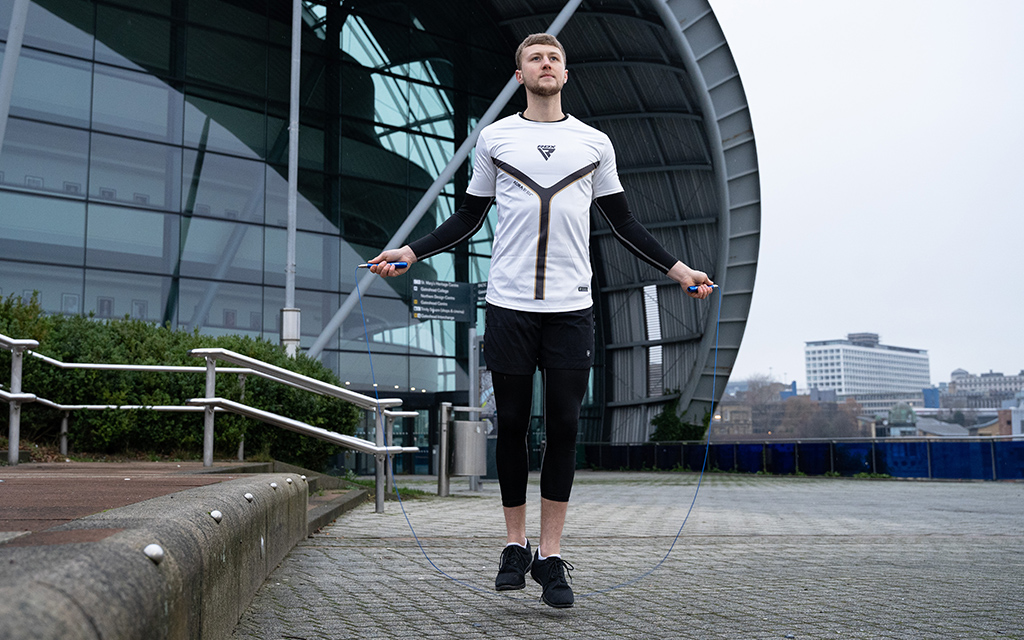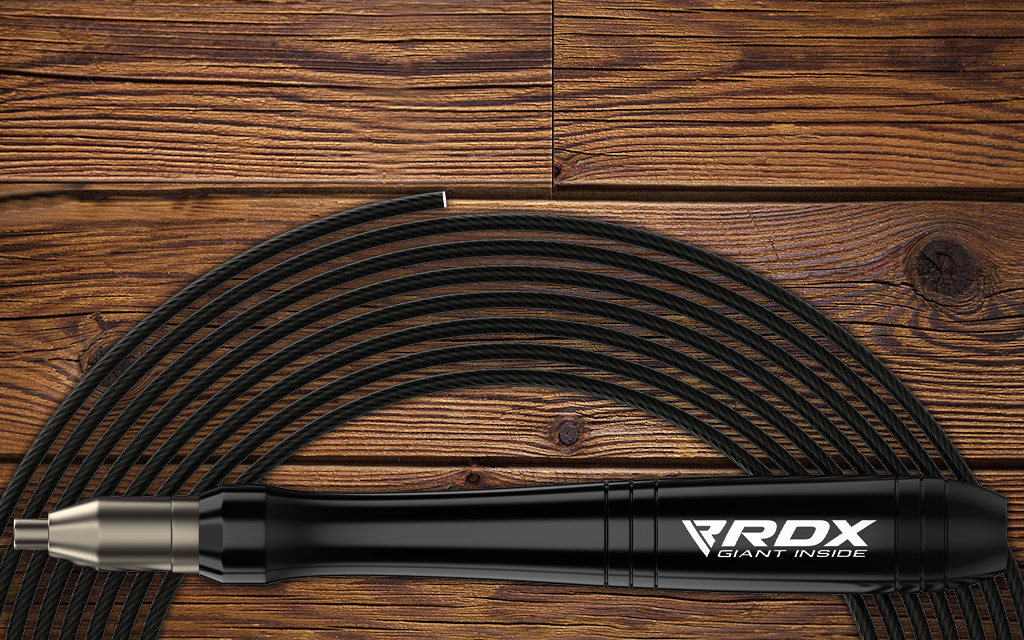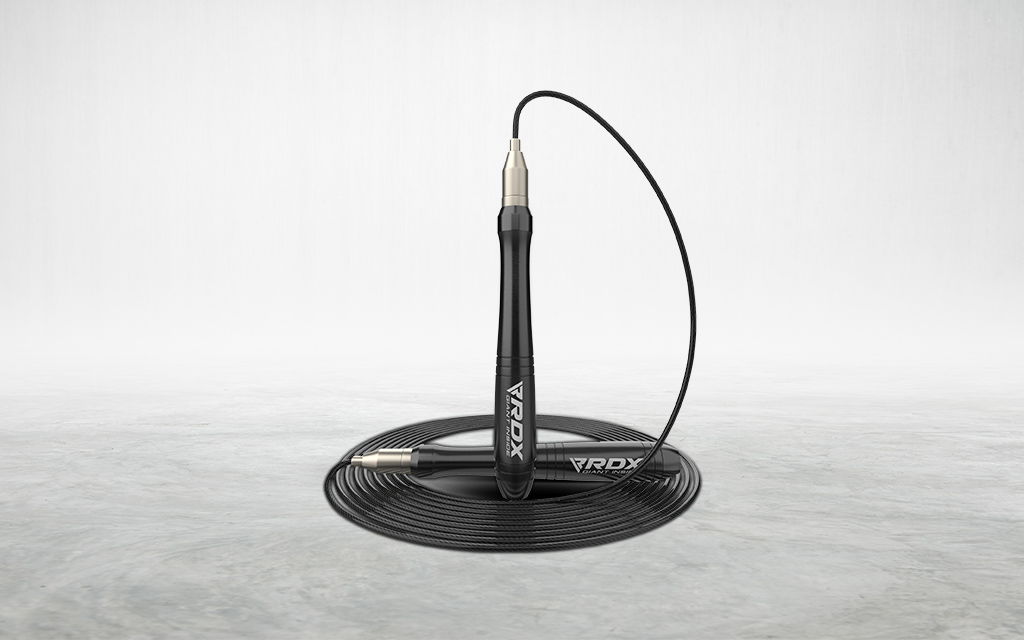Jump ropes are on fire in the fitness world! Not only are they an incredibly effective way to burn calories, but they’re also super convenient and affordable. Plus, they don’t require any fancy equipment or expensive setups.
Jumping rope is a fun activity that increases your heart rate and builds muscular endurance. It’s also great for honing your coordination and agility; just try it yourself! With all these advantages, it’s no surprise that jump ropes have become one of the most popular forms of exercise among fitness enthusiasts. If you want to get fit without investing too much time or money into a gym membership, jumping rope will be worth trying! Not to mention, it can be done almost anywhere, anytime.
Traditionally, jump rope workouts have been an effective way to stay in shape and get a good cardio workout. But to take your jump rope routine to the next level, you must start transforming it. Adding new elements and mixing up exercises can create a more challenging and dynamic workout that will keep your heart rate up while helping you reach fitness goals faster.
In this article, you will learn about some advanced jump rope techniques that can instantly transform your fitness routine.
Why Should You Be Using Jump Ropes?

Jump ropes are an incredibly versatile piece of exercise equipment. Not only can they provide a great cardiovascular and aerobic workout, but they are also easy to use and relatively inexpensive. Here are just a few reasons why you should be incorporating jump ropes into your fitness routine:
- Convenience: Jump ropes are incredibly lightweight and portable, so you can easily take them wherever you go for on-the-go workouts. And since they require minimal space, they’re perfect for small living spaces or apartments!
- Burn Calories: One session of jumping rope will burn up to 1,000 calories per hour, more than other popular forms of cardio, such as running or cycling. So if you’re looking to shred those extra pounds, jump ropes are a great way to go.
- Improve Coordination: Jumping rope is a skill that takes practice to perfect. With each jump, you must time the rope rotation correctly and control your arms and legs for maximum efficiency. This kind of coordination will help improve your balance and agility in other forms of exercise too!
- Low-Impact Workout: Jumping rope is a lower impact on your body than running or jogging; this makes it safer for those with joint problems or injuries who want to stay active without putting too much strain on their bodies.
Related article: 7 Tips To Lose Weight With A Skipping Rope
Basic Jump Rope Routines For Beginners

Basic jump rope routines offer a great way to get your heart pumping and your body moving. Whether you’re looking for an easy way to start your day with a quick workout or an experienced athlete seeking to mix up your routine, basic jump rope exercises are the perfect solution!
Jump ropes provide an effective full-body workout: they engage the upper body and target muscles in the legs, core, and arms. A few minutes of basic jumping can quickly burn calories and get your blood flowing faster than other forms of exercise. Plus, simple cardio exercises like jumping rope are low-impact activities that won’t put too much strain on your joints—perfect for those just starting their fitness journey.
If you’re new to jump rope routines, plenty of easy exercises can help you gain coordination and build endurance over time. A few basic jumping techniques include:
-
The Sidestep
Stand with your feet slightly wider than hip-width apart and start turning the jump rope in circles between both hands. As you turn the rope, step to the side with one foot and then step back into the center as soon as the rope passes underneath your feet again. Do this repeatedly on each side for a full minute or two – or until you feel warmed up!
-
The One Leg Hop
Start turning your jump rope in circles and hop with one foot while the other remains on the ground. Make sure to do this routine in short bursts of 30 seconds each – alternating between your left and right leg – for a full minute or two.
-
The In and Out Jump
Start jumping over the rope with both feet, but as you jump, extend one arm higher up than the other. As soon as you land, twist your body inwards so that your arms cross in front of each other, then jump again with opposite arms crossing (this time extending one arm lower. Do this for at least a full minute!
For beginners still getting the hang of things, focusing on proper form before adding intensity to your routine is essential. Once you feel more comfortable with your movements, gradually increase the speed at which you move your arms and legs while focusing on keeping a consistent rhythm throughout the workout.
Advanced Jump Rope Techniques
Here are nine advanced jump rope techniques that will help take your skills to the next level:
-
One-leg Jump
This technique requires jumping on one foot, and switching legs mid-air with each rope rotation. To perform this move, hop with your right leg, switch to your left leg in mid-air, and land firmly back on your right leg. Keep your hips square with the ground, and use quick arm movements to make the transition easier.
-
Double Unders
Double unders are a more advanced jump rope technique that requires two jumps per rope turn. To do a double under, take off from both feet simultaneously and clear the rope twice before landing again on both feet. Keep your arm movements fast and consistent for maximum success!
-
Crosses
Crosses require you to jump and cross your feet over one another with each turn of the rope. To practice this technique, begin by pushing off from both feet and crossing them mid-air as the rope passes beneath your feet. Make sure you land with crossed feet before repeating the process on the next rope rotation.
-
High Knees
High knees are a challenging jump rope technique that requires you to lift your knees high with each rope rotation. To perform this move, hop off both feet and quickly raise your right knee as you pass over the rope. Then switch legs for the next rotation, lifting your left knee instead of your right knee while clearing the rope between jumps.
-
Back-to-Front
The back-to-front technique requires you to jump forward and then backward with each turn of the rope. To do this move, start by hopping off both feet and then jumping back on the next rope rotation before returning to a forward motion. Keep your arms in sync with your body to stay balanced during this exercise!
-
Heel Touches
Heel touches are a fun but challenging jump rope technique that requires you to touch your heels together as you pass over the rope each time. Start by pushing off from both feet and then bringing your right heel up towards your left heel mid-air while clearing the rope beneath before landing again on both feet. Keep your arms steady and your body in a straight line for maximum success!
-
Side-to-Side
This move is similar to the back-to-front technique but requires you to cross over from side to side with each jump instead of forward and back. To perform this exercise, start by hopping off both feet, then quickly moving your left foot over your right mid-air while clearing the rope beneath before landing again on both feet. Be sure to keep your arms moving at the same time as well for a better workout!
-
Half Turns
Half turns are a great way to add variation to your jump rope routine. To practice this move, start by pushing off from both feet and then rotating your body halfway around as you jump over the rope. Keep your arms steady for maximum control over your body’s movement!
-
Half Unders
This technique requires you to jump off both feet and clear the rope once, but jump lower than usual on each rotation. To do half under, start by pushing off from both feet before quickly lowering your body mid-air while clearing the rope beneath. Be sure to land firmly back on both feet before repeating this process on the next turn of the rope!
Related article: Advantages of Skipping Rope in your Workout Routine!
Common Mistakes to Avoid With Jump Ropes

Jump rope workouts are a great way to get fit and stay in shape, but they can be tricky to master. Many people need to correct their mistakes while working out with jump ropes that can prevent them from getting the most out of their workout. Here are some of the common mistakes to watch out for when you’re doing your jump rope routine:
- Not using the right kind of rope: Different jump ropes are designed for different types of exercises. Ensure you know what type of rope is best suited for each exercise so you don’t injure yourself!
- Not warming up enough: Before jumping into any workout, you must warm up your body correctly. Jumping into a workout without a proper warm-up can lead to injuries and exhaustion.
- Using too much force on the rope: Using a gentle, controlled motion when jumping rope is essential. Too much force can strain your muscles and joints, leading to fatigue and soreness.
- Doing the same exercises repeatedly: Variety is key in jumping rope workouts; don’t be afraid to mix up your routine with different exercises or reps!
- Not focusing on the form: Paying attention to how you jump is just as important as the speed or intensity of the workout itself. Ensure you are landing correctly, not bouncing too high off the ground, and using proper form to maximize your workout.
By avoiding these common mistakes, you can ensure you’re getting the most out of your jump rope workouts and having fun!
Related article: Burn 135 Calories In 10 Minutes Using Skipping Rope
Choosing The Right Jump Rope

Jump rope is an excellent way to increase your heart rate and improve cardiovascular health. Many different types of jump ropes are available, so you’ll want to choose the one that’s right for you.
Try a beaded or fabric rope if you’re looking for a basic jump rope. These are typically very affordable and come in various colors and lengths. Beaded ropes have small beads on each end, making it easy to track how many jumps you’ve completed. Fabric ropes are lightweight and can usually be adjusted for the correct length based on the user’s height.
For more advanced athletes who need more of a challenge, Speed Ropes may be the ideal option. These ropes are designed to be lightweight and fast, allowing for quick rotations. They also come in various colors and lengths so that you can find the perfect one for your skill level.
If you’re looking for a rope that combines speed and stability, Battling Ropes may be right. These thick ropes are durable and can withstand even the toughest workouts. They offer more resistance than regular jump ropes, making them great for HIIT workouts or strength training.
No matter which type of jump rope you choose, ensure it fits properly and is comfortable. The correct length will ensure you get the most out of your workout without sacrificing safety or form.
Related article: A Guide To Choosing The Right Skipping Rope Length
Final Words
Jump ropes are a surprisingly fun way to get in shape. You can easily set up your jump rope workout, no matter your fitness level. Jump ropes improve strength and agility while keeping your heart rate up. Plus, they’re portable and inexpensive – you only need space to do a few jumps!
If you’re new to jump roping, start with shorter intervals and learn the basic technique. Then gradually work up to longer sessions as your skills improve. Try different jumps, such as double unders or skipping on one foot, to mix things up. It’s amazing how just a few minutes of jumping can make you sweat and feel the burn!





